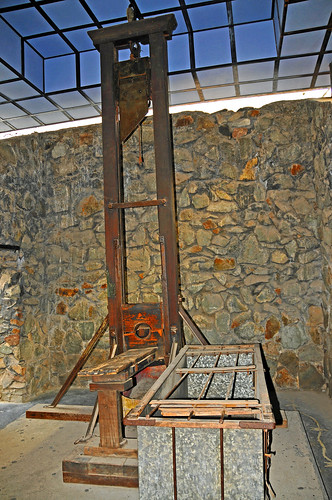On this date in 1790, Dr. Joseph Guillotin proposed the use of a machine consisting of a blade between two upright wooden tracks as a means of humane execution of those condemned to death. The weighted blade is pulled up by a rope and pulley, then released to drop onto the neck of the condemned prisoner, beheading them and killing them almost instantly.
On this same date three years later, King Louis XVI was executed using the guillotine. France continued to use the guillotine to carry out the death penalty for many years afterward. The last public execution by guillotine in France was in 1939; the last execution of any kind by guillotine in France was in 1977. France abolished the death penalty in 1981.
Versions of this machine had existed before Dr. Guillotin made his proposal, and he did not invent or refine the machine that eventually bore his name. (See, for example, the "Halifax Gibbet" which was in use from the 16th century in Halifax, England.) Ironically, Dr. Guillotin himself opposed the death penalty, and his purpose was to make execution less horrific and painful.
However, it was the use of the machine in the bloody days of the French Revolution, when first the aristocracy and then the leaders of the Reign of Terror were publicly executed, that the guillotine became widely known.
The guillotine has been used to carry out death sentences in other countries through the years, including Sweden in the 19th century, Nazi Germany, and Algeria and South Vietnam in the 1960s. The guillotine shown in the above photo is in a museum in Ho Chi Minh City, Vietnam.
Guillotine is most often used as a noun, but can be a verb as well, describing the use of the machine. ("The condemned prisoner was guillotined in the town square.")
Two other less common uses of the word guillotine are also notable. One describes a type of device used to cut objects by use of a blade, most often seen in paper trimmers:
The other is a type of parliamentary procedure used in British Parliament to limit (or cut off) debate on a certain topic. The same procedure is called cloture in the U.S. Congress.


No comments:
Post a Comment